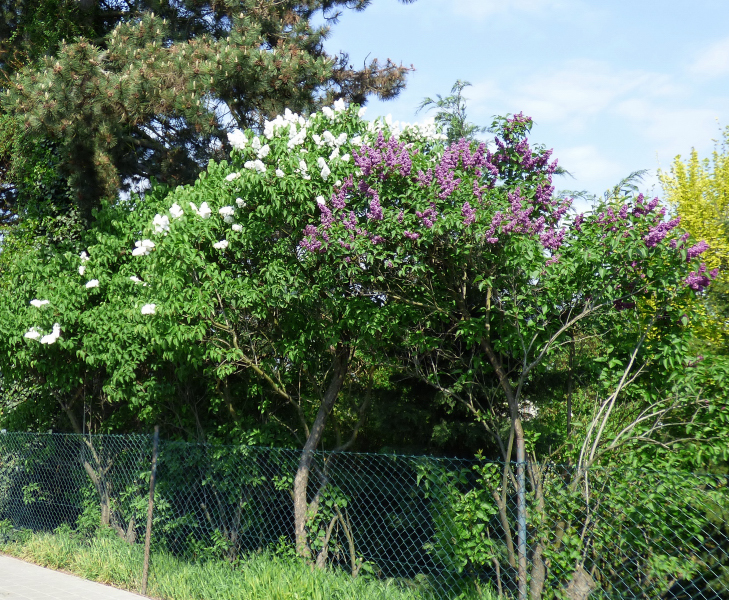Lilac (Syringa) Overview:
Origin and Distribution: Lilacs are native to Eastern Europe and Asia and belongs to the Oleaceae family. However, due to their popularity, they have been cultivated and can now be found in many parts of the world.

Description: Lilacs are deciduous shrubs or small trees, with simple leaves arranged in opposite pairs. The flowers are small, usually with a four-lobed corolla and are typically grouped in dense panicles.
Bloom Time: Most lilacs bloom in the late spring, and their flowers are renowned for their fragrance. However, the exact bloom time can vary based on the specific species and local climate conditions.
Cultivars and Varieties: There are over 20 species in the genus Syringa, and numerous cultivars have been developed. Some popular species and cultivars include:
- Syringa vulgaris: The common lilac, which comes in various colors, from purple to white.
- Syringa meyeri: Known as the dwarf Korean lilac. It has smaller panicles of flowers and is compact in growth.
- Syringa reticulata: The Japanese tree lilac, which grows taller than most other species and has creamy white flowers.

Care and Maintenance: Lilacs prefer a location with full sun (at least 6 hours of sunlight daily) and well-draining soil. They're fairly hardy, but it's essential to prune them regularly, preferably just after flowering, to maintain shape and encourage vigorous growth.
Uses: Lilacs are primarily ornamental plants and are often planted in gardens, parks, and hedges. Besides their aesthetic appeal, lilacs have been used in perfumes because of their lovely fragrance. In some cultures, lilac flowers are used symbolically; for instance, they can represent love or the coming of spring.
Pests and Diseases: Lilacs can be susceptible to a few pests like lilac borers and scales, and diseases like powdery mildew or bacterial blight. Regularly checking your lilacs and maintaining good garden hygiene can help in prevention.
Symbolism: Throughout history, lilacs have been used to symbolize various emotions and events. For instance, in the language of flowers (floriography), the lilac symbolized the emotions of early love.
Cultural Impact: Lilacs have had a significant impact in literature and art. The flowers' transient beauty and remarkable scent have made them a popular subject for poets, painters, and songwriters.

![]() Lilac
Lilac 







